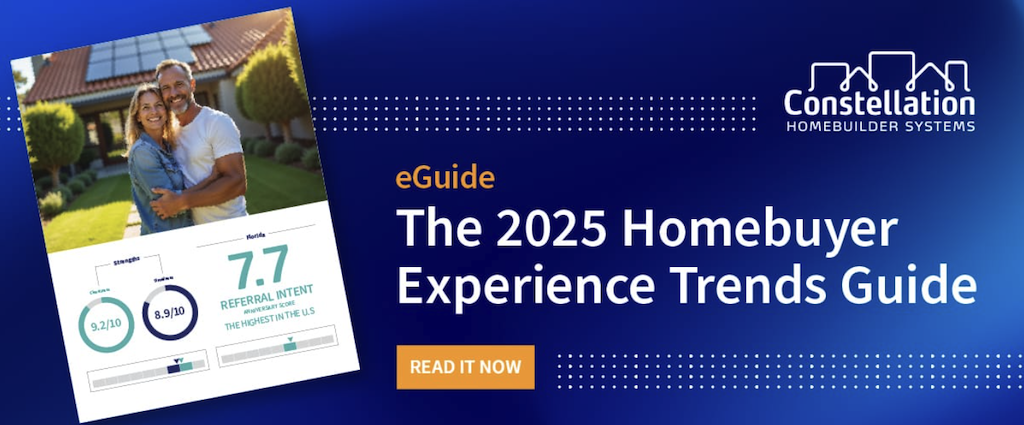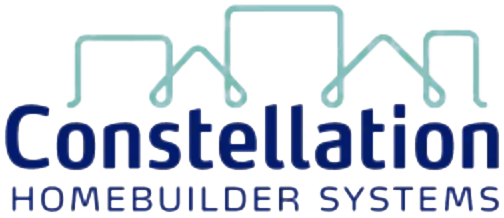Technology
How Brookfield Residential Built A Tech Feedback Loop That Performs
Brandon Sharp, Chief Information Officer of Brookfield Residential, shares how eliminating spreadsheet and disparate legacy systems, and investing in real-time visibility, has created a performance culture — from the field to finance.

In one of the most unforgiving stretches for new-home sales in over a decade, homebuilders face a triple threat: stagnant traffic, squeezed affordability, and tightening capital.
According to the latest NAHB/Wells Fargo Housing Market Index, builder sentiment for August 2025 printed at 32, mired in 16 straight months of pessimism. Two out of three homebuilders are leaning more heavily on sales incentives to drive new orders. The average price cut among homebuilders is 5%. Meanwhile, the average mortgage rate clings stubbornly in the 6.5-to-7% range.
As we're hearing from operators nationwide, the squeeze on private homebuilders is tightening. Every discount chips away at the margin. Every unsold spec home tightens cash flow. Every delayed start sows uncertainty with banks, trade partners, and internal teams alike. As Signature Homes EVP Tyler Belcher recently told The Builder’s Daily:
The market is tougher now… mortgage rates are persistently high. There’s a lot of policy uncertainty… There are fewer buyers to go around.”
The challenge? Operating leaner and smarter, and not waiting for recovery. The Builder’s Daily has repeatedly heard from operators and technology partners stressing the same refrain: now is not the time to delay transformation. It’s time to retool.
Brookfield Residential’s more than seven years of advancements in data and tech are exemplary ways of responding to market conditions through innovation. Brandon Sharp — CIO of Brookfield Residential, with over 20 years of experience in various executive roles throughout the homebuilding industry — is emphatic that now is precisely the time when builders should lean into systems, unify data, and operationalize change.

A Transformation Born From Tough Timing
Brookfield Residential’s story isn’t about just investing during boom times. As Sharp tells TBD in an exclusive conversation, the company committed to its digital overhaul in 2018—not amid frothy sales velocity, but as an investment in long-term stability and adaptability:
“We had this opportunity with a clear executive mandate that we were going to transform the company and build an organization around data.”
Working closely with Constellation HomeBuilder Systems, Brookfield Residential undertook what Sharp might call a dual-track modernization strategy — utilizing its flagship NEWSTAR ERP system, while laying the groundwork for a broader operational overhaul centered on clean, structured data.
By partnering with Constellation — and insisting on mandatory system use across teams — Brookfield Residential began unlocking visibility, accuracy, and speed in its relentless pursuit of excellence, drive, and innovation.
Not About the Tool, But the Partner
Sharp is quick to credit Constellation not merely as a vendor, but as a strategic partner.
“The real benefit of integrated solutions… is as much related to the partner you choose as it is to the systems application stack.”
Brookfield Residential’s IT and finance teams became deeply involved in influencing development of Constellation’s next-gen ERP platform - NX, including QA testing, and helping to define the requirements for new capabilities. The result wasn’t just a better product—it was a platform precisely aligned with a homebuilder’s operational needs.
Sharpening Pencils in Soft Markets
When the housing market softens, the signs are unmistakable: incentives rise, absorption slows, and revenue lines begin to blur. For builders, this triggers a familiar reflex: tightening the belt on general and administrative (G&A) expenses. IT budgets shrink, discretionary spending dries up, and transformation initiatives are shelved in favor of short-term survival.
But what if this reflex is precisely the wrong move?
In the quieter moments of the cycle—when housing starts pull back and production slows—builders find themselves with a rare commodity: time. The back-office settles, the field teams hustle to sell what’s already built, and the operational engine slows a bit. It’s in these moments that the opportunity for transformation is greatest,” Sharp says.
Rather than retreating, this is the time to advance.
Builders should seize the lull as an opportunity to rethink how they utilize their systems, manage data, and streamline business processes. Data inefficiencies—those hidden costs that accumulate unnoticed during boom times—can be addressed. Processes can be rationalized.
This isn’t just about technology. It’s about mindset.
Operational clarity isn’t a luxury reserved for growth periods. It’s a necessity in downturns. Builders who invest in transformation during soft markets emerge stronger, leaner, and more prepared to scale when the cycle turns. They don’t just survive—they position themselves to thrive,” adds Sharp.
So while the instinct may be to cut, the smarter move is to calibrate. Use the slowdown to build resilience. Because when the market rebounds, the builders who sharpened their pencils will be the ones writing the next chapter.
From Siloed Teams to Systemic Clarity
As market conditions began to reveal challenges on the mortgage and capital borrowing cost front in 2023 and 2024, Brookfield Residential was already operating from a position of strength. Because teams were using core systems properly — feeding NEWSTAR clean, consistent data — finance could rely on that information to build high-trust planning models.
This was no longer about month-end reporting. It was about real-time, forward-looking decision-making.
We can now see the immediate impact running through real cash flow models on every housing asset… as the business evolves,” Sharp says.
Brookfield Residential partnered with Constellation to lay the groundwork for a rich, high-fidelity data environment. By enforcing disciplined use of the NEWSTAR application stack and building a robust data warehouse in parallel, the team created a living, breathing view of the business. Every keystroke mattered. Every operational update—whether a price change, a delayed start, or a revised commission assumption—flowed into a dynamic planning engine.
Today, Brookfield Residential fluently meshes historical actuals with real-time operational data to generate long-term, asset-level forecasts. The result is a planning environment that doesn’t just reflect the past or present—it anticipates the future. It’s a strategic muscle, built on executional discipline, that allows leaders to see, respond, and recalibrate with precision.
If we want to ramp up incentives or slow starts or change pricing, the FP&A [financial planning and analysis] team can model that and produce a brand-new business plan within a few hours.”
From ‘Hope’ to Operational Precision
Unlike large public builders who are already scaled for volume, private operators must prioritize speed. As Bob Swainhart, VP of Enterprise Solutions at Constellation, explains:
Brookfield Residential can model the impact of changes in material costs due to shortages and effect on closings in 2029. That level of visibility is unheard of in this industry.”
It’s not just a margin advantage—it’s a cultural one. As Sharp notes:
If it’s important enough to go in a spreadsheet, it’s important enough to put in the system.”
That principle — mandatory keyboard use — has become the rule across Brookfield Residential. No shadow data. No parallel systems. Everyone operates from a single, trusted source of truth.
Conviction, Clarity, and Capital
Sharp distills Brookfield Residential’s successful transformation into a personalized framework -- “three Cs” – for leading digital transformation initiatives:
1. Conviction – Leadership willing to prioritize long-term change, even when short-term pressures bite.
2. Clarity – A shared, well-articulated vision of what transformation looks like and why it matters.
3. Capital – Resource commitments, even (especially) during market slowdowns.
Any builder missing one of these, Sharp says, is likely to stall. Those who combine all three can sprint, even while others stand still.
You’ve got to be willing to do the hard work. Transformation is disruptive. But you don’t wait until the market is booming to get ready.”
Why This Matters Now
As industry reports show, market indicators remain sobering. Cancellations are up. Spec inventory is swelling. Regional banks are retreating from AD&C. The builders who win now are those who streamline every handoff, collapse every feedback loop, and eliminate every guess in their cost model.
Brookfield Residential’s data management and digital discipline delivers all of that — and then some. They’re not waiting for signals. They’re simulating the outcomes. Not just month to month, but year by year, asset by asset.
In a market-punishing delay, their edge is visibility. In an industry beset by silos, their edge is unity. In a domain bedeviled by handoffs across a boundaryless ecosystem of partners and moving parts, their edge is full, end-to-end accountability.
And in a moment where all homebuilders face similar market challenges, Brookfield Residential—through data—is choosing its path forward.
Constellation provides fully-integrated or standalone software solutions expertly engineered to manage the complete ecosystem of a homebuilder’s business functions and growth.
MORE IN Technology
Andrin Homes Turns Customer Pain Into Business Culture Shift
Facing the toughest Toronto market in decades, Andrin operationalized a proactive homeowner experience strategy. What started as a service platform became a catalyst for team alignment, trust, and performance.
Homebuilding’s Hardest Test: Change As Core Competency
Residential development leaders are being forced to lead across timelines. Resilience means solving today’s air pockets with tomorrow’s customers in mind.
Pre-Development Is Where Velocity Happens: Here's How
In a high-cost, high-risk market, developers and builders must find every dollar and day they can save. Integrated digital pre-construction tools are quietly delivering outsized impact — if you know where to look.


